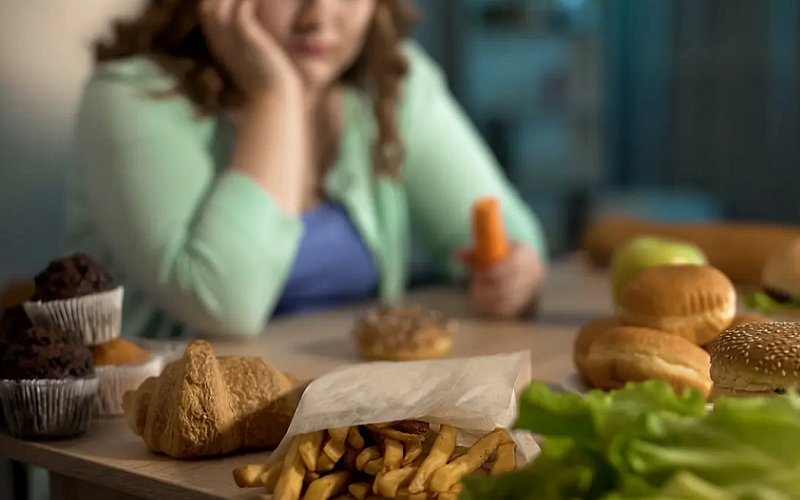Cravings can often feel like an overpowering force, disrupting our best intentions and leading us away from our health goals. Understanding and managing these cravings is crucial for maintaining a balanced and healthy lifestyle. Here we explore how cravings work, their triggers, and how the intricate dance of neurochemistry plays a role in our desire for certain foods. By integrating mindfulness techniques with knowledge of neurochemistry, you can effectively manage your cravings and take control of your eating habits.
Contents
Understanding Cravings
Cravings are a natural part of human experience, often emerging as sudden, intense desires for specific foods. Understanding the nature of these cravings and their triggers can help in managing them more effectively.
Types Of Cravings
Cravings can be classified into different types based on their origins and characteristics. Each type requires a unique approach to management.
Physical Cravings
Physical cravings arise from genuine hunger or nutritional deficiencies. These cravings are the body’s way of signaling that it needs certain nutrients. For example, a craving for salty foods might indicate a need for sodium, while a desire for sweet foods might suggest low blood sugar levels.
Emotional Cravings
Emotional cravings are driven by feelings and moods. These cravings often surface in response to stress, sadness, boredom, or even happiness. People might crave comfort foods like chocolate or ice cream to cope with their emotions, seeking solace in these familiar tastes.
Habitual Cravings
Habitual cravings are linked to routines and habits. These cravings occur out of habit rather than actual need or desire. For instance, someone might crave a snack every evening simply because they are used to eating at that time, regardless of whether they are hungry.
Common Triggers For Cravings
Understanding what triggers cravings is essential for managing them. Different factors can set off these intense desires for specific foods.
Environmental Triggers
Environmental triggers include external cues that prompt cravings. These can be sights, smells, or even sounds associated with certain foods. Walking past a bakery and smelling fresh bread, for example, can trigger a craving for baked goods.
Psychological Triggers
Psychological triggers involve the mind and emotions. Stress, anxiety, depression, or even happiness can trigger cravings. Emotional eating is a common response to these psychological triggers, leading people to seek comfort in food.
Biological Triggers
Biological triggers are related to the body’s internal state. Hormonal fluctuations, such as those during menstruation, pregnancy, or menopause, can lead to intense cravings. Similarly, imbalances in neurotransmitters, like serotonin or dopamine, can also trigger cravings [1].
The Role of Neurochemistry in Cravings
Neurochemistry plays a significant role in the formation and experience of cravings. By understanding the key neurotransmitters involved and how they influence our desire for certain foods, we can better manage and control our cravings.
Key Neurotransmitters Involved
Neurotransmitters are chemical messengers in the brain that influence various functions, including mood, appetite, and cravings. Several key neurotransmitters are particularly important in the context of cravings.
Dopamine
Dopamine is often referred to as the “reward” neurotransmitter. It is released in response to pleasurable activities, including eating. When we consume foods high in sugar or fat, dopamine levels rise, creating a sense of pleasure and reinforcing the desire to repeat the behavior. This can lead to intense cravings for these types of foods.
Serotonin
Serotonin is a neurotransmitter that regulates mood, appetite, and digestion. Low levels of serotonin are associated with increased cravings for carbohydrates, as consuming these foods can temporarily boost serotonin levels and improve mood. This is why people often crave comfort foods like pasta or bread when they are feeling down.
Endorphins
Endorphins are neurotransmitters that act as natural painkillers and mood enhancers. They are released during activities such as exercise and eating, particularly when consuming foods that are spicy or high in fat. The release of endorphins can create a feeling of euphoria, contributing to cravings for these types of foods.
How Neurotransmitters Influence Cravings
The interaction between neurotransmitters and cravings is complex, with various factors influencing this relationship. Understanding how neurotransmitters affect cravings can help in developing strategies to manage them.
Reward System Activation
The brain’s reward system is activated by the release of dopamine in response to pleasurable stimuli, such as eating tasty foods. This activation reinforces the behavior, making us more likely to seek out and crave these foods in the future. This reward system is a powerful driver of cravings, especially for foods that are high in sugar and fat [2].
Stress and Emotional Regulation
Neurotransmitters like serotonin and endorphins play a crucial role in regulating mood and stress levels. When we are stressed or experiencing negative emotions, our brain may seek to balance these feelings by craving foods that boost serotonin and endorphin levels. This can lead to emotional eating, where we consume certain foods to feel better temporarily.
Impact of Neurochemical Imbalances
Imbalances in neurotransmitter levels can significantly affect cravings, often leading to unhealthy eating patterns and difficulty managing cravings.
Overactive Reward System
An overactive reward system, driven by excessive dopamine release, can lead to intense cravings and compulsive eating behaviors. This can result in a preference for high-calorie, high-sugar foods, which are known to trigger strong dopamine responses. Over time, this can contribute to weight gain and other health issues.
Deficiencies and Excesses
Deficiencies or excesses in neurotransmitter levels can also impact cravings. For example, low serotonin levels can increase cravings for carbohydrates, while an imbalance in endorphins can affect the desire for certain types of foods. Addressing these imbalances through diet, lifestyle changes, or medical intervention can help in managing cravings more effectively.

Mindfulness and Craving Management
Mindfulness is a powerful tool for managing cravings. By cultivating awareness and being present in the moment, we can better understand our cravings and respond to them in healthier ways. Integrating mindfulness into our daily routines can significantly impact how we handle cravings.
Introduction to Mindfulness
Mindfulness is the practice of paying attention to the present moment without judgment. It involves being aware of our thoughts, feelings, and bodily sensations.
Definition of Mindfulness
Mindfulness can be defined as the quality or state of being conscious or aware of something. It means maintaining a moment-by-moment awareness of our thoughts, feelings, bodily sensations, and the surrounding environment.
Benefits of Mindfulness Practices
Practicing mindfulness has numerous benefits, including reduced stress, improved emotional regulation, and increased focus. It helps in breaking the automatic reaction to cravings, allowing us to respond thoughtfully rather than impulsively [3].
Techniques for Mindful Craving Management
There are several techniques that can be used to incorporate mindfulness into craving management. These techniques help in recognizing and addressing cravings in a more controlled and conscious manner.
Mindful Awareness
Mindful awareness involves being conscious of your cravings as they arise. Instead of reacting automatically, take a moment to observe the craving. Notice the physical sensations, emotions, and thoughts associated with it. This awareness helps in understanding the craving without immediately giving in to it.
Mindful Breathing
Mindful breathing is a simple yet effective technique. When a craving arises, take a few deep breaths. Focus on the sensation of the breath entering and leaving your body. This helps in calming the mind and reducing the intensity of the craving.
Mindful Eating
Mindful eating involves paying full attention to the experience of eating. Eat slowly, savor each bite, and notice the flavors, textures, and smells of the food. This practice not only enhances the enjoyment of food but also helps in recognizing when you are truly hungry or full.
Case Studies and Examples
Real-life applications and success stories can provide valuable insights into how mindfulness can effectively manage cravings.
Real-Life Applications
For instance, a person who practices mindful awareness might notice that their cravings often arise during stressful times. By recognizing this pattern, they can address the underlying stress rather than turning to food for comfort.
Success Stories
Success stories of individuals who have effectively used mindfulness to manage their cravings can be inspiring. These stories highlight practical examples of how mindfulness techniques have helped people regain control over their eating habits and reduce unhealthy cravings.
Strategies for Harnessing Neurochemistry
Effectively managing cravings involves not only understanding neurochemistry but also implementing strategies that leverage this knowledge. By using targeted approaches such as diet, exercise, behavioral interventions, and relaxation techniques, we can influence neurotransmitter levels and reduce cravings.
Diet and Nutrition
Diet plays a crucial role in regulating neurochemistry. By choosing the right foods, we can support the balance of neurotransmitters and reduce cravings.
Foods That Influence Neurochemistry
Certain foods can positively affect neurotransmitter levels. For example, foods rich in tryptophan, such as turkey, eggs, and cheese, can boost serotonin production. Omega-3 fatty acids, found in fish like salmon and sardines, support dopamine and serotonin function. Including a variety of fruits, vegetables, lean proteins, and healthy fats in your diet helps maintain optimal neurotransmitter levels.
Nutritional Supplements
Nutritional supplements can also help in managing cravings by supporting neurotransmitter production and balance. For instance, vitamin B6 and magnesium are essential for serotonin synthesis. Omega-3 supplements can enhance overall brain health. Consulting with a healthcare provider can help determine which supplements might be beneficial for your specific needs [4].
Physical Activity and Exercise
Exercise is a powerful tool for regulating neurochemistry. It influences the release of neurotransmitters that affect cravings and overall mood.
Exercise and Neurotransmitter Release
Physical activity stimulates the release of endorphins, dopamine, and serotonin, which can reduce cravings and improve mood. Regular exercise helps create a natural balance in these neurotransmitters, making it easier to manage cravings.
Recommended Exercises
Incorporating a mix of aerobic exercises, such as running or swimming, with strength training and flexibility exercises like yoga can provide a comprehensive approach to improving neurochemistry. Even moderate activities like walking or gardening can be beneficial.
Behavioral Interventions
Behavioral techniques can help in managing cravings by changing thought patterns and behaviors associated with food.
Cognitive Behavioral Techniques
Cognitive Behavioral Therapy (CBT) techniques can help identify and change negative thought patterns related to cravings. By challenging these thoughts and replacing them with healthier ones, individuals can reduce the intensity and frequency of their cravings.
Habit Formation and Breaking
Understanding and modifying habits is key to managing cravings. Techniques such as habit stacking, where a new healthy habit is paired with an existing one, can help replace unhealthy eating behaviors with more positive ones. Breaking old habits requires consistent effort and mindfulness.
Relaxation and Stress Reduction
Stress is a significant trigger for cravings. By incorporating relaxation techniques, we can manage stress levels and reduce the likelihood of stress-induced cravings.
Meditation Practices
Meditation helps in calming the mind and reducing stress. Practices such as mindfulness meditation, focused breathing, and guided imagery can lower stress levels and decrease cravings. Regular meditation practice enhances overall emotional regulation and resilience.
Yoga and Other Relaxation Techniques
Yoga combines physical movement with breath control and meditation, making it an effective practice for balancing neurochemistry. Other relaxation techniques, such as progressive muscle relaxation and tai chi, can also help in managing stress and cravings.
Integrating Mindfulness and Neurochemistry
Combining mindfulness with an understanding of neurochemistry offers a powerful approach to craving management. By developing personalized strategies that leverage both mindfulness techniques and neurochemical knowledge, individuals can achieve more effective and lasting results.
Developing a Personal Craving Management Plan
Creating a personalized plan helps in systematically addressing cravings. This plan should be tailored to individual needs and preferences.
Self-Assessment
Start by assessing your current cravings, triggers, and eating habits. Identify patterns and specific situations that lead to cravings. This self-awareness is crucial for developing a targeted management plan.
Goal Setting
Set clear, achievable goals for managing cravings. These goals can include reducing the frequency of cravings, making healthier food choices, or incorporating specific mindfulness practices into your routine. Clear goals provide direction and motivation.
Combining Techniques for Maximum Effectiveness
Using a multi-modal approach that combines various techniques can enhance craving management. Integrating mindfulness and neurochemical strategies ensures a comprehensive plan.
Multi-Modal Approach
Combine mindfulness practices like mindful breathing and eating with dietary changes and exercise routines that support neurochemistry. For example, practice mindful eating during meals and engage in regular physical activity to boost neurotransmitter balance.
Adapting Strategies Over Time
Monitor your progress and be willing to adapt your strategies as needed. What works initially may need adjustments over time. Stay flexible and open to modifying your plan based on your experiences and changing needs.
Monitoring Progress and Adjusting Techniques
Regular monitoring and evaluation are essential for effective craving management. Use tools and techniques to track your progress and make necessary adjustments.
Tracking Tools and Apps
Utilize tracking tools and apps to monitor your cravings, food intake, and mindfulness practices. These tools can provide valuable insights and help you stay accountable. Apps designed for mindfulness and nutrition tracking can be particularly helpful.
Periodic Review and Adaptation
Conduct regular reviews of your craving management plan. Assess what is working and what needs improvement. Make adjustments based on your findings to ensure continuous progress. Periodic reviews help in maintaining motivation and achieving long-term success.
References
[1] Craving to Quit: psychological models and neurobiological mechanisms of mindfulness training as treatment for addictions
[2] Mindfulness interventions for craving reduction in substance use disorders and behavioral addictions
[3] The Curious Science of Cravings
[4] The Mindfulness Cure for Craving






